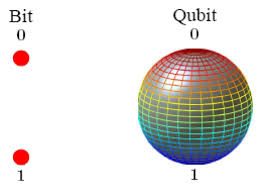Science & Technology
Quantum Key Distribution
- 13 Oct 2021
- 5 min read
Why in News
Recently, the government has inaugurated C-DOT’s (Centre for Development of Telematics) Quantum Communication Lab and unveiled the indigenously developed Quantum Key Distribution (QKD) solution.
- The government has also allocated USD 1 billion for the National Mission on Quantum Technologies and Applications spanning over a period of 8 years.
Key Points
- About:
- QKD, also called Quantum Cryptography, is a mechanism to develop secure communication.
- It provides a way of distributing and sharing secret keys that are necessary for cryptographic protocols.
- Cryptography is the study of secure communications techniques that allow only the sender and intended recipient of a message to view its contents.
- Cryptographic algorithms and protocols are necessary to keep a system secure, particularly when communicating through an untrusted network such as the Internet.
- The conventional cryptosystems used for data-encryption rely on the complexity of mathematical algorithms, whereas the security offered by quantum communication is based on the laws of Physics.
- Mechanism:
- In the QKD, encryption keys are sent as ‘qubits’ (or quantum bits) in an optical fibre.
- Optical fibers are capable of transmitting more data over longer distances and faster than other mediums. It works on the principle of total internal Reflections.
- QKD implementation requires interactions between the legitimate users. These interactions need to be authenticated. This can be achieved through various cryptographic means.
- QKD allows two distant users, who do not share a long secret key initially, to produce a common, random string of secret bits, called a secret key.
- The end-result is that QKD can utilize an authenticated communication channel and transform it into a secure communication channel.
- It is designed in a way that if an illegitimate entity tries to read the transmission, it will disturb the qubits – which are encoded on photons.
- This will generate transmission errors, leading to legitimate end-users being immediately informed.
- In the QKD, encryption keys are sent as ‘qubits’ (or quantum bits) in an optical fibre.
- Qubits:
- Conventional computers process information in ‘bits’ or 1s and 0s, following classical physics under which our computers can process a ‘1’ or a ‘0’ at a time.
- Quantum computers compute in qubits. They exploit the properties of quantum mechanics, the science that governs how matter behaves on the atomic scale.
- In this scheme of things, processors can be a 1 and a 0 simultaneously, a state called quantum superposition.
- Because of quantum superposition, a quantum computer — if it works to plan — can mimic several classical computers working in parallel.
- Need:
- QKD is essential to address the threat that rapid advancement in Quantum Computing poses to the security of the data being transported by various critical sectors through the current communication networks.
- Benefits:
- The technology would be useful in enabling various start-ups and small and medium enterprises in the domain of quantum information.
- It is expected to create a definition of standards and formulate crypto technology-related policies.
- Significance:
- Detection of Leak:
- It allows the detection of data leak or hacking because it can detect any such attempt.
- Predetermined Error Levels:
- It also allows the process of setting the error level between the intercepted data.
- Unbreakable Encryption:
- The encryption is unbreakable and that’s mainly because of the way data is carried via the photon.
- A photon cannot be perfectly copied and any attempt to measure it will disturb it. This means that a person trying to intercept the data will leave a trace.
- Detection of Leak:






